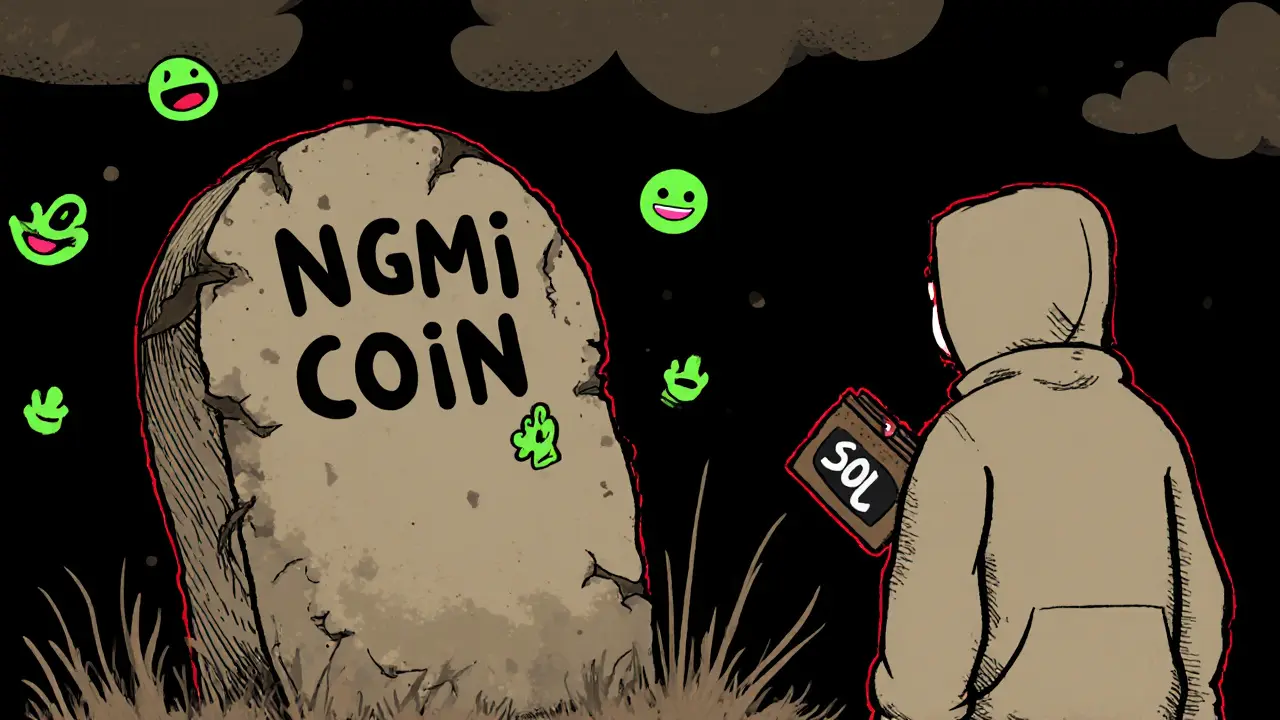NGMI Coin: What It Really Means and Why It Keeps Showing Up in Crypto
When you hear NGMI, a slang term in crypto meaning 'Not Gonna Make It,' used to mock poor investment decisions. Also known as NGMI coin, it's not a cryptocurrency you can buy—it's a cultural punchline that follows every failed airdrop, rug pull, and hype cycle. You won’t find NGMI on Binance or Coinbase. You won’t see its whitepaper or roadmap. But you’ll see it in Discord channels, Twitter threads, and Reddit threads the moment someone buys a token with no utility, no team, and no liquidity.
NGMI isn’t just a joke—it’s a warning label. It’s what traders yell when someone buys a token that dropped 99% in a week, like MIMO, a governance token for a nearly dead stablecoin with zero trading volume, or POP Network Token, a coin with no product, no community, and a 99.5% price crash. These aren’t random failures. They’re textbook NGMI moments. The same way people say ‘YOLO’ before jumping into a meme coin, they say ‘NGMI’ after it crashes. It’s the crypto world’s way of saying, ‘I told you so.’
And here’s the twist: NGMI is often used by the people who got rich off the same scams. They buy early, pump the hype, then leave the latecomers holding the bag. The coin that gets called NGMI today might’ve been the one that made someone 10x last month. That’s the game. It’s not about fundamentals—it’s about timing, noise, and who’s left holding the bag. That’s why posts about Thoreum, a token with fake CoinMarketCap airdrop claims, or EVA, a non-existent airdrop used to trick users, keep popping up. They’re not guides—they’re autopsy reports.
What you’ll find below isn’t a list of NGMI coins to avoid. It’s a collection of real stories where people got burned, misled, or tricked—and then the whole community laughed. You’ll read about airdrops that never happened, exchanges that vanished overnight, and tokens that were dead before they launched. This isn’t about investing. It’s about learning how the game is played so you don’t become the punchline.
